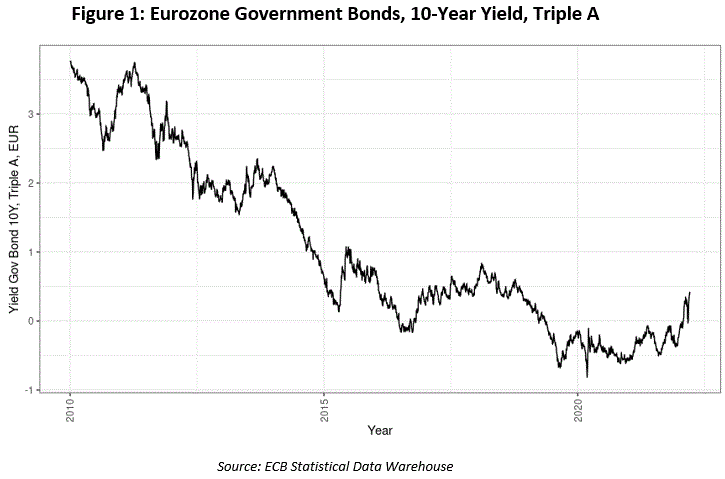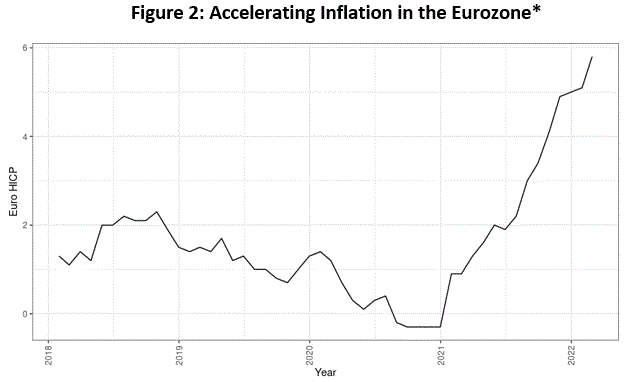
Credit risk and interest rate risk are often perceived by banks as worlds apart, thanks in part to the well-established risk taxonomy of the Basel Committee on Banking Supervision (BCBS). However, in practice, that is certainly not the case. Indeed, credit risk is affected by shifts in central bank policies – such as interest-rate increases that have recently been adopted and more that are on the horizon.
Many loans in banks’ lending books today were created during a prolonged period of relaxed lending standards, so some central banks, including the European Central Bank (ECB), have expressed concern about the potential impact of the rate changes on both lenders and borrowers.
 Marco Folpmers
Marco FolpmersObligor risk, of course, will increase as interest rates rise, and banks will therefore be faced with higher credit risk. Moreover, they will become less well-capitalized, potentially even up to the point where “financial stability” is adversely impacted, according to the ECB.
Some academics argue that risk-taking behavior is incentivized during a low-interest-rate period, partly because banks’ net interest income is weakened by a smaller spread environment. So, as we shift toward higher interest rates, it will be interesting to observe whether banks take a more conservative, less risky approach to loans and investments.
While changes in central bank policies (including increased interest rates) have grabbed headlines, they’re not the only threat that could impact credit risk. The tapering – or tightening – of central banks’ monetary policies can also be attributed, in part, to rising geopolitical risks that have fueled inflation. Russia’s invasion of Ukraine, of course, is having a wide-ranging impact.
Before offering guidance on the steps financial risk managers can take to mitigate the dual threat of increasing interest rates and rising geopolitical risk, it makes sense to first take a quick look at the trends we tend to see during low-interest-rate periods.
The Impact of 7 Years of Low Rates
Shifts in interest rates affect the loan portfolio in multiple ways. During a period of low rates, interest rate spreads tend to decrease. Lower spreads mean less interest income for banks, and typically lead to an increase in banks’ risk appetite, following a “hunt-for-yield” incentive.
Consequently, during periods of low interest rates, lending standards tend to be relaxed. Newly-created credit portfolios will then be riskier than the existing portfolios that originated during a period of stricter lending standards. Borrowers in a low-interest-rate environment, moreover, typically have higher PDs and/or worse collateral values than obligors that were given loans prior to the relaxation of lending standards.
In a low-interest-rate environment, selecting assets based on a risk/rewards analysis is a less effective practice. If money is cheap, the risk/rewards selection mechanism is hampered, because it is relatively easy for a risky loan to have a risk-adjusted return above the hurdle rate. The longer a low-interest-rate regime persists, the more “old loan portfolios” are replaced with new portfolios that feature loans originated during a period of relaxed lending standards.
By now, you may be asking, how long did interest rates remain very low, before the 2022 policy changes? That depends on your threshold and metrics. But if we look at Figure 1, which depicts the yield of Triple-A-rated Eurozone Government Bonds from 2010 – 2022, we can deduce that interest rates in the EU have been structurally below 1% since 2015.

During periods of low rates, the impact of interest-rate risk on credit risk is often overlooked, especially since the Basel Committee on Banking Supervision’s (BCBS) risk taxonomy suggests such a clear-cut division between these two risks. However, after interest rates start rising (as they are doing now), the loan portfolio is hit by an increased level of credit risk: asset prices will then tend to depreciate, and this impacts collateral values and, hence, the LGD.
What’s more, refinancing rates increase when rates start to rise, reducing mortgage affordability for the retail segment and increasing PDs. The impact is even more immediate for commercial and retail clients with a variable interest rate, because their interest payments will undoubtedly increase.
Factoring in External Shocks
Periods of either low or high interest rates are part of a normal business cycle that the BCBS and other regulators have worked into their credit risk rules, to the point that they require “through the cycle” estimates of the risk parameters.
During crisis periods, capital requirements are not supposed to be procyclical – i.e., they’re not supposed to make things worse by constraining the credit supply in times when credit is desperately needed. However, credit risk dynamics have recently been exacerbated by at least two external shocks.
First, the COVID-19 pandemic and subsequent lockdown conditions during the past two years have led to accommodating government and central bank responses – including exceptionally low interest rates. The general consensus is that these responses were correct, and have helped to limit the detrimental impact of COVID-19 on the global economy.
However, to have fiscal and monetary firepower to combat future crises, it is important for these measures to be withdrawn once they are no longer needed. Today, government support is being withdrawn, and highly-accommodating central bank policies are gradually being reduced.
Second, Russia’s invasion of Ukraine has placed geopolitical risk squarely back on the map. Both the disruption of the war and the sanctions that have been issued in an efforts to bring it to halt have had an immediate impact on credit production and the food supply chain – especially wheat. In short, for as long as it continues, the Russia/Ukraine conflict will heighten inflation, increase uncertainty and influence interest rates.

Source: ECB Statistical Data Warehouse
*The Harmonized Index of Consumer Prices (HICP) is a tool used to measure consumer price inflation in the Eurozone.
Geopolitical risk and rising interest rates are both supporting a regime shift toward higher lending rates, higher inflation, and less purchasing power for consumers; for banks, this will result in stricter lending policies for new credit production and higher risk parameters for the existing loan book.
This is a dangerous cocktail for existing portfolios that were originated during the seven years of low interest rates. It simply means that banks have loans in their books that they wouldn’t be willing to extend under current conditions.
For variable-rate lending products, or for fixed-rate mortgage products (at their reset time), there’s a particular risk that both commercial and private obligors will start to have difficulty paying off loans – particularly since they will be facing higher interest payments.
FRM Response: 5 Guidelines
What can you do as financial risk manager to combat the ramifications of rising interest rates and increasing geopolitical risk? Here are five recommendations:
-
Acknowledge both geopolitical risk and interest rate risk as drivers of credit risk.
-
Deploy scenarios that not only anticipate on changes in the business cycle but also allow for external shocks – especially the ones that are already visible on the horizon.
-
Deploy scenario analysis to assess the impact of interest rate shocks on the credit portfolio, omitting forecasts on the future development of interest rates. (It’s not up to the FRM to predict future interest rates – only to prepare the bank for absorbing the shocks.)
-
Invest in credit-decision models, so that loan pricing, monitoring and affordability models are able to capture macroeconomic trends and, especially, external shocks.
-
Adjust lending standards, not only as a response to the business cycle but also to account for the robustness for external shocks.
Generating a profit will always come at a risk. But, as always, it is crucial to be aware of risk/return dynamics. This is particularly important in a volatile world that is impacted by pandemics, geopolitical risk and structural changes in the interest-rate curve.
Dr. Marco Folpmers (FRM) is a partner for Financial Risk Management at Deloitte the Netherlands. The author wishes to thank Wouter Hottenhuis, an intern at Deloitte the Netherlands FRM, for reviewing an earlier draft of this article.